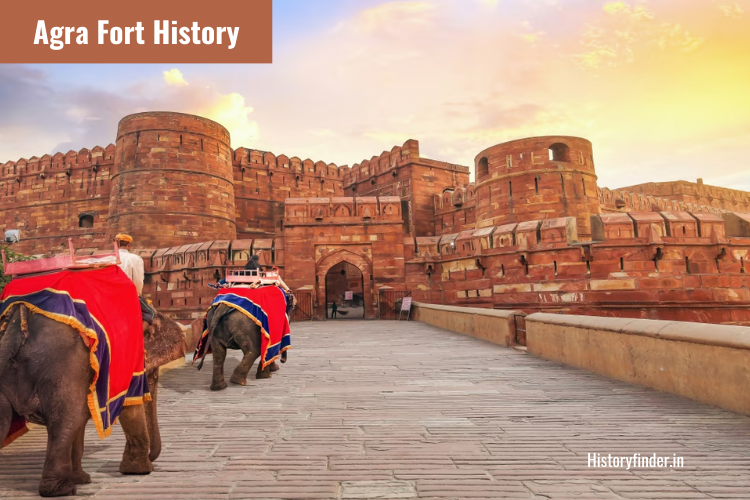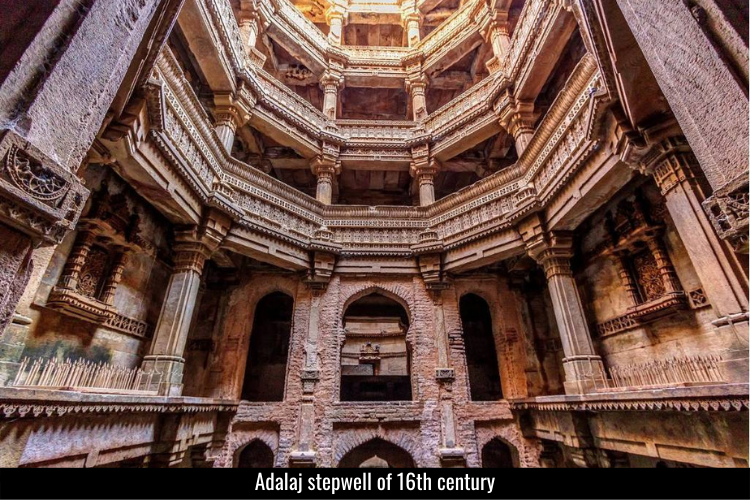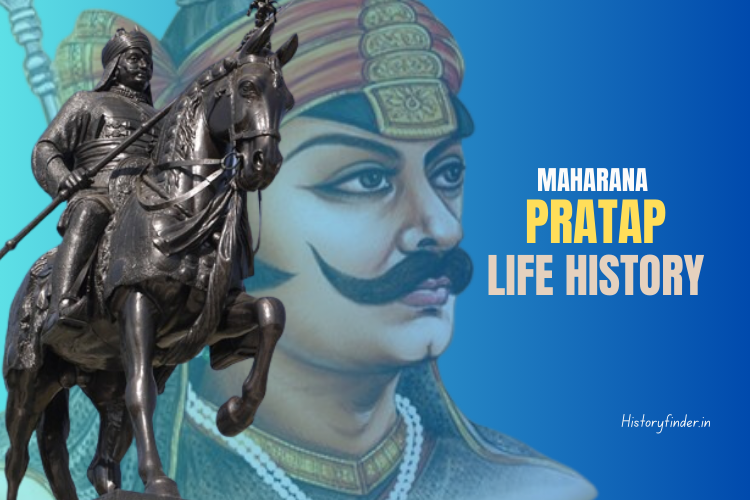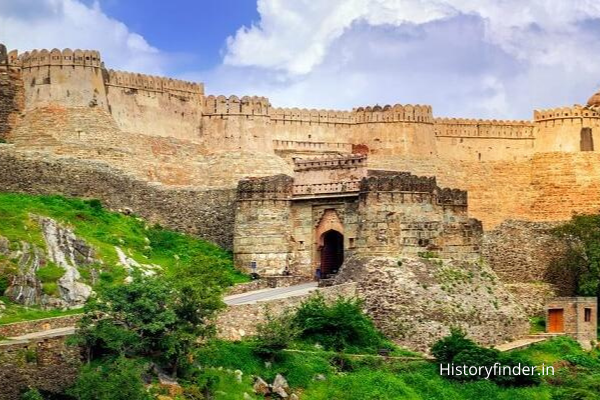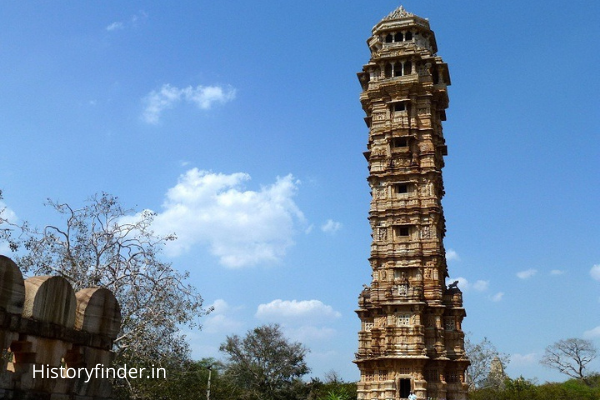Agra Fort is the famous red sandstone fort in Agra city that holds a honorary place in the Indian history. The fort also features among India’s most significant heritage architectures. The massive fort ramparts, the gates and bastions signify a massive royal footprint of the past. UNESCO thus in 1983, declared the red sandstone made Agra Fort a World Heritage site. The river Yamuna had once provided a great strategic significance to the fort, cherished by many Indian kings. Hence, the historical significance of Agra fort is massive.
Agra fort or Agra Quila was certainly not a mere military fort. Instead, Agra fort interior complex encompasses several magnificent palaces and other monuments. Jahangir Palace, Khas Mahal, Diwan-e-Aam, and Diwan-e-Khas: all famous monuments in Agra fort had a glorious time in Indian history. Moreover, a close connection with Taj Mahal, further glorifies the history of Agra fort.
Shinning history of Agra fort spans several centuries, featuring from 11th century until 1857. Many Indian emperors had occupied the fort in between, utilizing the strategic importance of the fort. But, Agra fort was majorly famous as the royal residence of Mughal emperors.
Sources of Information
Major sources about Agra fort information came from several old historical accounts. Majmu al-Tawarikh by Hafiz-e-Abru, Babarnama by Babur, Akbarnama by Abul Fazl are among the key sources of 15th century. 16th century onward, several historical accounts exist stating many information about Agra fort.
Abul Fazl described the old story of Agra fort. Badalgarh, an old brick fort existed at the same place.The red-sandstone Agra fort what we see today, was a late renovation of 16th century.
Agra Fort History: 18 Sublime Facts
Majority of Agra fort constructions took place during the Mughal era (1526-1857). However, several old historical accounts had revealed many interesting facts pre-Mughal Agra fort history as well.
1. Ghaznavid Invasion by Mahmud
Mahmud of Ghazni, during his 17 invasions to India between 1000-1026 CE, invaded Badalgarh. During his invasion of 1017, the regions of Mathura and Meerut came in his route. A historical record of 1080 claims Ghaznavid capture of Badalgarh. Arguably, it was the first invasion in the history of Agra fort.
2. Chauhan Dynasty Reign
The Chauhan Rajput dynasty ruled the region, as the feudal of the Gurjara Pratiharas between 12-15th century. Hence, the Chauhan Rajputs had definitely been among the earliest rulers of old Badalgarh or modern Agra fort. A modern inscription installed by Archaeological Survey of India, stating Agra fort history, also confirms the Chauhans held Badalgarh once.

3. Delhi Sultanate Acquisition
Sikander Khan Lodi, the Sultan of Delhi (1487-1517) had captured the fort from the Chauhan Rajputs in 1487. In the same year, Sikander Lodi shifted the capital of Delhi Sultanate to Agra. The new city of Agra, founded by Sikander Khan Lodi, quickly prospered. Agra fort thereafter turned into the royal residence of the Sultans for next few centuries.
Sikander Khan Lodi added several buildings inside the Badalgarh’s fort complex, including few palaces and mosques. But no historical account records the details of those renovations.
4. Mughal Establishment
With the decisive victory at the first battle of Panipat, Babur established Mughal empire in India. The historic fort of Agra hosted the grand coronation of Babur in India. Agra fort later hosted the coronations of Mughal emperors Humayun, Jahangir and Shah Jahan.
Babur made Agra fort the primary residence of the Mughals. They lived in the palace of Ibrahim Lodi, the last Sultan of Delhi Sultanate. Babur had also built a stone stepwell inside Agra fort complex. Babur ka Baoli, has thus got a great historical significance among the monuments in Agra fort. The three storied stepwell also had a bullock pulled water-wheel to raise ground water.
5. History of Koh-e-Noor (Kohinoor)
Humayun, son of Babur, gifted him the famous Koh-e-Noor (Kohinoor) diamond during his coronation at Agra fort. Since then the Koh-e-Noor had glorified the Mughal treasury at Agra fort. Later emperor Aurangzeb shifted the glorious diamond to Delhi Red fort.
6. Half-day Emperor Nizam
Humayun was saved from drowning by his saqqa, the water carrier. Mughal emperor Humayun honored his saqqa Nizam, crowning as emperor for half a day.
7. Sur-Mughal Dynasty Conflicts
Sher Shah Suri of Sur dynasty defeated Mughal emperor Humayun at the battle of Chausa in 1539. Humayun faced a heavy defeat in the next year at the battle of Bilgram. It forced Humayun to retreat from Agra. Sur dynasty kings held their control over the fort until 1555. Sher Shah had definitely made few renovations, however, exact details are not clear.
Humayun recaptured Agra fort in 1555 from Adil Shah Suri. But Hemu, general of Adil Shah, recaptured Agra fort again in 1556. But Mughal forces eventually defeated Hemu in the second battle of Panipat in 1556. Mughal general Bairam Khan beheaded Hemu and captured Agra fort in November 1556.
8. Agra Fort Renovations by Akbar
Abul Fazl’s Akbarnama described former Badalgarh as a ordinary fort of bricks and mud. Akbar realized the strategic importance of the fort. Hence, ordered full renovation of the fort with red sandstone. Renovation work of Agra fort began in 1565 and eventually completed in 1573.
Akbar built all four monumental gateways in Agra fort: Delhi Darwaza, Akbari Darwaza, Khizri Darwaza and Ghazni Darwaza. Akbar also ensured a strong fortification with double fort ramparts. He further ensured circular bastions in some intervals for security surveillance. Major constructions of Akbar included Jahangir Mahal, Akbari Mahal, Anguri Bag, Diwan-e-Khas, Diwan-e-Aam. Emperor Shah Jahan, the grandson of Akbar, eventually took Agra fort as model while building the Red fort of Delhi.
Akbarnama records about 500 buildings that existed inside Agra fort complex. Many of structures had adopted the designs of Gujarat and Bengal.
9. Treasury and Coin Mint
Mughal emperor Akbar made Agra fort his treasury, that eventually turned into the largest Mughal treasury in few decades. Several historical accounts claim that Akbar’s treasury consisted of precious thrones, gemstones as gold and silver coins. The gemstones included diamonds, emeralds, rubies, and pearls. Emperor Akbar had also build his coin mint in Agra fort, the largest in India during 15th century.

10. Renovations by Shah Jahan
Present form of Agra fort has got many additions from Shah Jahan, the fourth Mughal emperor. Shah Jahan, in fact, had to demolish quite a few constructions of his grandfather, to make space for new constructions. His impeccable constructions within the Agra fort complex include Khas Mahal, Sheesh Mahal and Shahi Burj. Shah Jahan also made few significant renovations of Diwan-e-Khas, Diwan-e-Aam.

The most classic Mughal emperor had build the special palace (Khas Mahal) for his lovely daughters. Khas Mahal was just another white marble construction of Shah Jahan again reflects his immense romanticism on arts and architecture.

Shahi Burj or Musamman Burj was another phenomenal construction of Shah Jahan. The grand tower produced a fascinating view of Taj Mahal, commemorating his most romantic partner, Mumtaj Mahal. Shah Jahan spent his last days at the Shahi Burj, imprisoned by his son Aurangzeb.
11. Staggering Peacock Throne
Peacock throne of emperor Shah Jahan was unarguably the most precious, and gorgeous Mughal throne. Shah Jahan made the peacock throne or Takht-e-Murassa in 1635. The most precious throne consisted of 1150 Kg of gold and 350 gemstones. Kohinoor and Akbar Shah diamonds were the most notable diamonds of Peacock throne. While the Timur ruby was most glorifying among many other gems and jewels of Peacock throne.
Later, Shah Jahan shifted his capital to Delhi or former Shahjahanabad in 1638. But Agra fort continued to protect Peacock throne. Eventually, emperor Aurangzeb took the throne to Delhi Red fort.
12. Maratha Supremacy
Peshwa Balaji Vishwanath defeated Mughal emperor Farrukhsiyar in 1719, unfurling Maratha flag at Agra fort for the first time. But the Maratha confederacy lacked a handful grip over the fort. As a result, next few decades of Agra fort history went through a highly political turbulence. It changed hands quite frequently between the Marathas and the Mughals.
The defeat at the Third battle of Panipat to Ahmad Shah Abdali was a massive set back for the Marathas. The defeat cost them a huge loss of wealth, military resources and eventually the control over the region. The much weaker Mughal army easily recaptured the fort but only for few months.
13. Jat rule at Agra Fort
The Jats of Bharatpur had left a brief history over Agra fort. During the month of May in 1761, Maharaja Suraj Mal seized the fort of Agra. The Mughal army under Mirza Fazilka Khan, couldn’t resist the month long seize. Finally Maharaja Surajmal captured the fort on 12th June of 1761. A significant amount of Mughal wealth went under Surajmal’s treasury, making him more dominant in the region.
Agra fort remained under Jat possession for 13 years, until Mughal commander Mirza Nazaf Khan recaptured the fort in 1774. But during the brief span, Agra fort got quite a few touches from a Hindu ruler. Maharaja Ratan Singh ki Haveli was the most significant yet rare Jat construction inside Agra fort complex.
13. Shinde Occupancy at Agra Fort
Maratha general of Gwalior, Mahadji Shinde (or, Scindia) gained control over the region including the fort in 1785. Agra fort became his key strategic and military base thereafter. Shinde dynasty protected the northern region alongside the fort for next two decades against the British emergence. Daulatji Shinde eventually lost the battle of Assaye to British East India company (EIC) in 1803. The loss forced him to sign treaty of Surji-Anjangaon with the company. The Shindes eventually lost control of Delhi-Agra and other provinces in northern India.
15. British Acquisition of Agra Fort
The British era at Agra fort began in 1803. Post the second Anglo Maratha war (1803-05), Daulatji Shinde of Gwalior eventually turned powerless. EIC Governor Warren Hastings made sure Daulatji remained neutral in the decisive third Anglo Maratha war (1817-19). So, the Marathas did never get a chance to recapture Agra fort.
Many of the Mughal constructions were destroyed between 1803-62, very few of them survived until 1947.
16. Ghaznin Gate Story
In 1842, Lord Ellenborough, the EIC Governor General, installed the Ghaznin gate at Agra fort. He claimed the gate was among the looted items of Sultan Mahmud of Ghazni from Somnath temple in 1025. But, it soon proved to be a false claim.
17. Site of Battle during Revolt of 1857
The fort played a crucial role during the Indian revolt of 1857, as a site of battle. Bahadur Shah-2, the last Mughal emperor, lead the sepoys against the British in the battle. The sepoys seized Agra fort for two months (2nd August – 11th October, 1857). It followed by a minor battle that eventually brought conclusion of the rebellion. British government soon realized the incompetency of EIC and eventually took control of Agra fort in 1858.
18. Gun Powder Explosion at Agra fort
On 9th December in 1871, the gun powder explosion was a tragic incident in the history of Agra fort. According to The Bombay Mail’s news, the incident occurred in the chief laboratory, killing 26 people. The explosion occurred while the manufacturing of cartridges were in progress. The conductor in-charge himself including a sergant and a European boy were among the killed peoples.
Modern Day Agra fort
After independence of India in 1947, the Government of India took over the control of Agra fort. The Archaeological Survey of India now maintains the fort. The fort is now a famous tourist destination in Agra, Uttar Pradesh. In 1983, UNESCO declared Agra fort a World Heritage Site, for its prestigious history of five long centuries.
Agra Fort FAQs
Agra fort is about a century older than Delhi Red fort. The current form of Agra fort was built by Mughal emperor Akbar between 1565-73 CE, over an existing fort Badalgarh. Alternatively, Delhi Red fort was built by Mughal emperor Shah Jahan between 1638-48 CE.
Mughal emperor Akbar founded Agra fort in 1565 CE, over an existing brick fort called Badalgarh. Agra fort served as the seat of government, military base and the royal residence of Mughal empire.
Some marvelous palaces, mosques and royal courts built by Mughal emperors Akbar and Shah Jahan exist inside Agra fort. Diwan-e-Aam, Diwan-e-Khas and the Khas Mahal are among the most prominent Mughal structures existing inside Agra fort.
